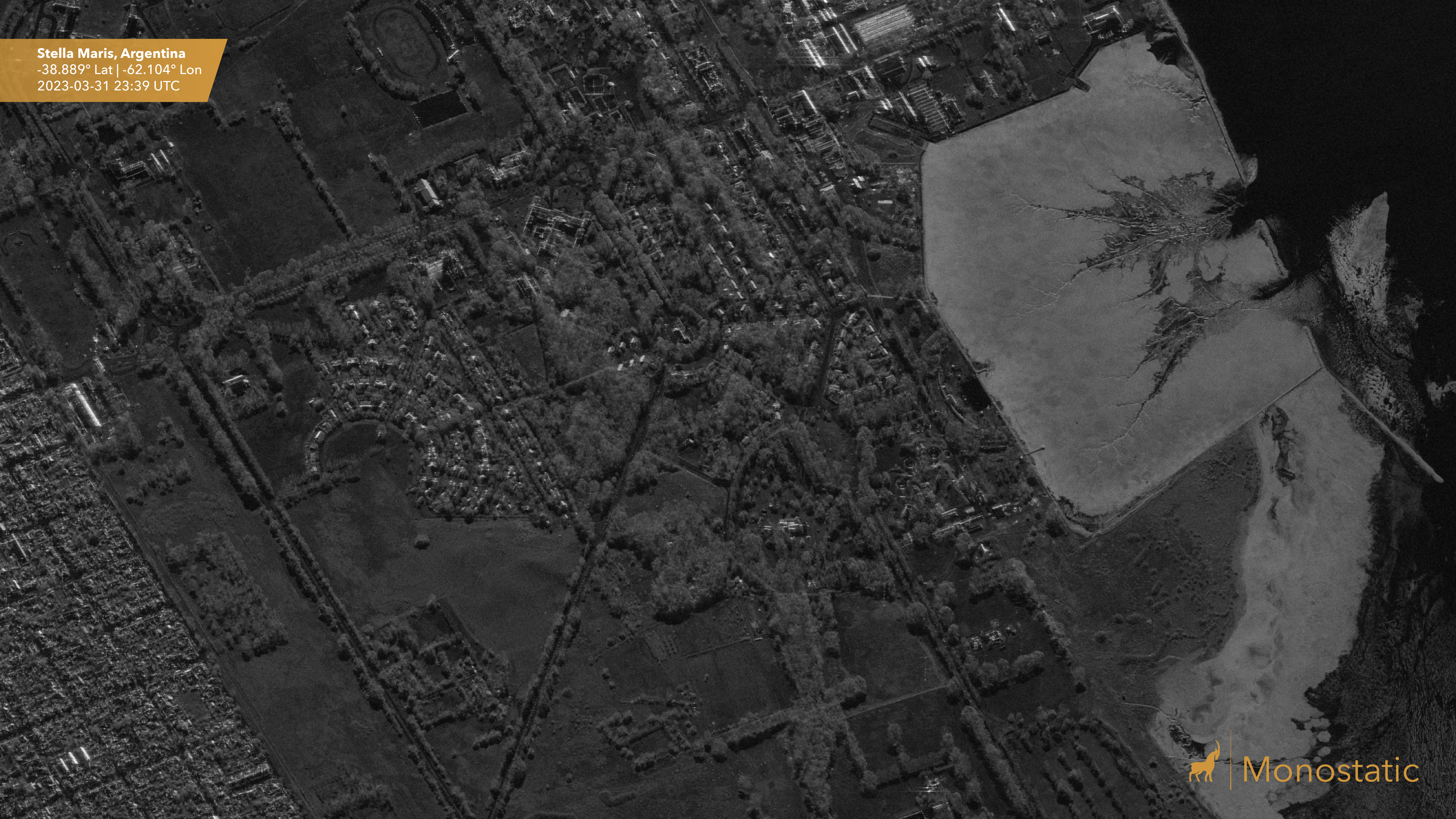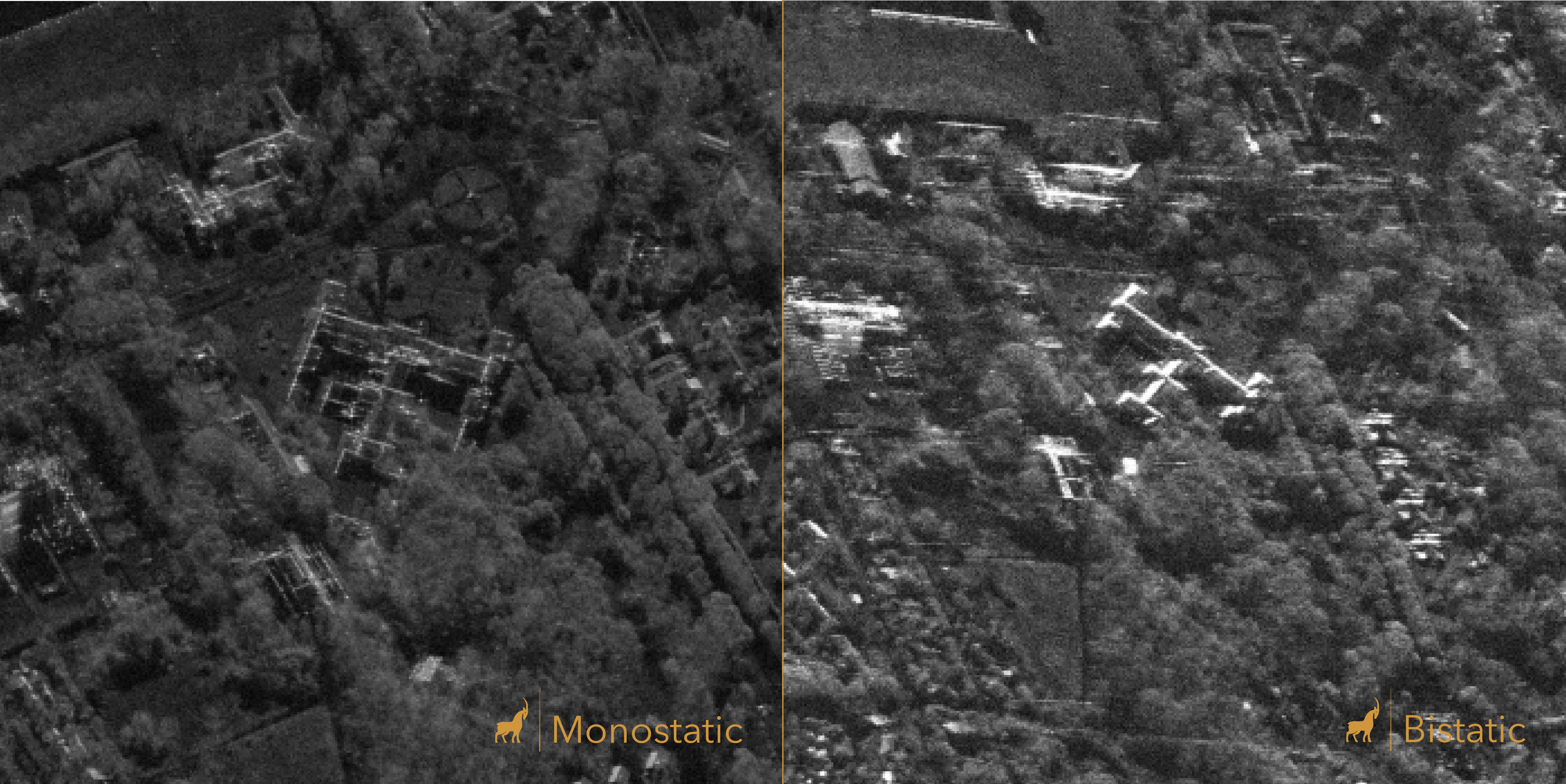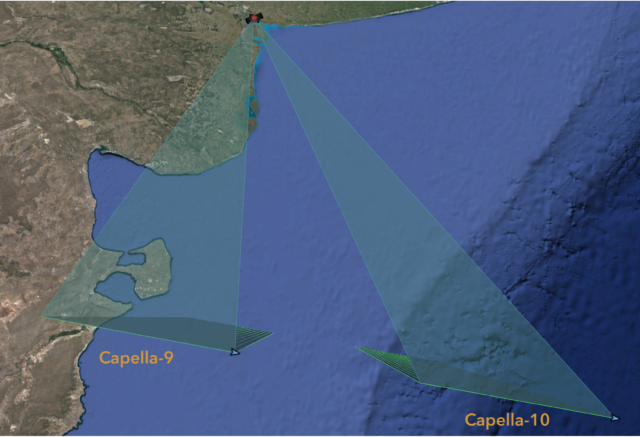Capella Space continually pushes the envelope of what is possible with commercial Synthetic Aperture Radar (SAR). In addition to having the highest quality commercial SAR imagery on the market, we also experiment with non-standard imaging modes to bring new capabilities to our customers. The launch of our latest satellites (Capella-9 and Capella-10, March 16, 2023) on a single Rocket Lab rocket provided us the opportunity to experiment with bistatic SAR imaging.
Typical SAR imaging is done with a single radar that has the transmitter and receiver collocated. This is known as monostatic SAR imaging. Bistatic SAR imaging is a technique that uses two radars, one that transmits (and receives) and the other that only receives. The data collected by the receiving radar is combined with metadata collected by the transmitting radar to create a bistatic SAR image. A monostatic SAR image is also generated from the data collected by the transmitting radar.
Bistatic SAR is used to improve object imaging, to avoid interference from radar jamming, and to implement moving target indication and interferometry techniques. This is made possible by having the transmitting and receiving radars at different locations. For example, bistatic SAR improves object imaging by capturing images from different angles which provides more information about the shape of the object, thereby improving object identification and classification. For this reason, a bistatic imaging geometry can enable radars to image structures specifically designed to reduce the more common monostatic radar signature, such as stealth aircraft.
The experiment was conducted on March 31, 2023 over Punta Alta, Argentina. Capella-9 was tasked to perform a regular spotlight collect, while at the same time, Capella-10 was configured to a receiving, “listen-only” mode. The geometry of the collect is shown in the figure below. Capella-9 steered the antenna beam towards the scene with a nominal side-looking configuration. Capella-10 was leading Capella-9 in the orbit by around 275 km while steering its antenna to the scene. The bistatic angle for the collect was around 30 degrees. Both radars collected data for 20 seconds.
The data from the collects were processed with a custom polar format algorithm written at Capella. The theoretical resolution of the bistatic collect is 0.5 m x 0.08 m (range x azimuth resolution). The final images are multi-looked to 0.5 m x 0.5 m resolution. The images below are shown in the natural radar coordinate system (slant plane). As a result, the images are rotated with respect to one another. The size of the features appears different in each image because the images haven’t been mapped onto the ground plane. Only a section of the full image is shown here to make it easier to see buildings and other small features.
Various differences are visible between the monostatic and bistatic images that show how bistatic imaging significantly improves object detection. For example, the channels in the exposed wetland area (right hand side in the image) are far more visible in the bistatic image than in the monostatic image. The bistatic scattering from the residential area (left hand side of the image) is far brighter than that in the monostatic image, and the Hotel Puerto Belgrano (center-top of the image) is hardly visible in the monostatic image but shows up very clearly in the bistatic image.


Capella’s industry-leading technology continues to push the boundaries of what can be accomplished with commercial SAR satellites. With a culture dedicated to iteration and innovation, Capella’s satellites are proving new capabilities that can deliver more advanced insights from 24/7, all-weather data.
Read more about novel use cases and applications for Capella’s highest-quality, very high-resolution data from our Community: https://www.capellaspace.com/community/



